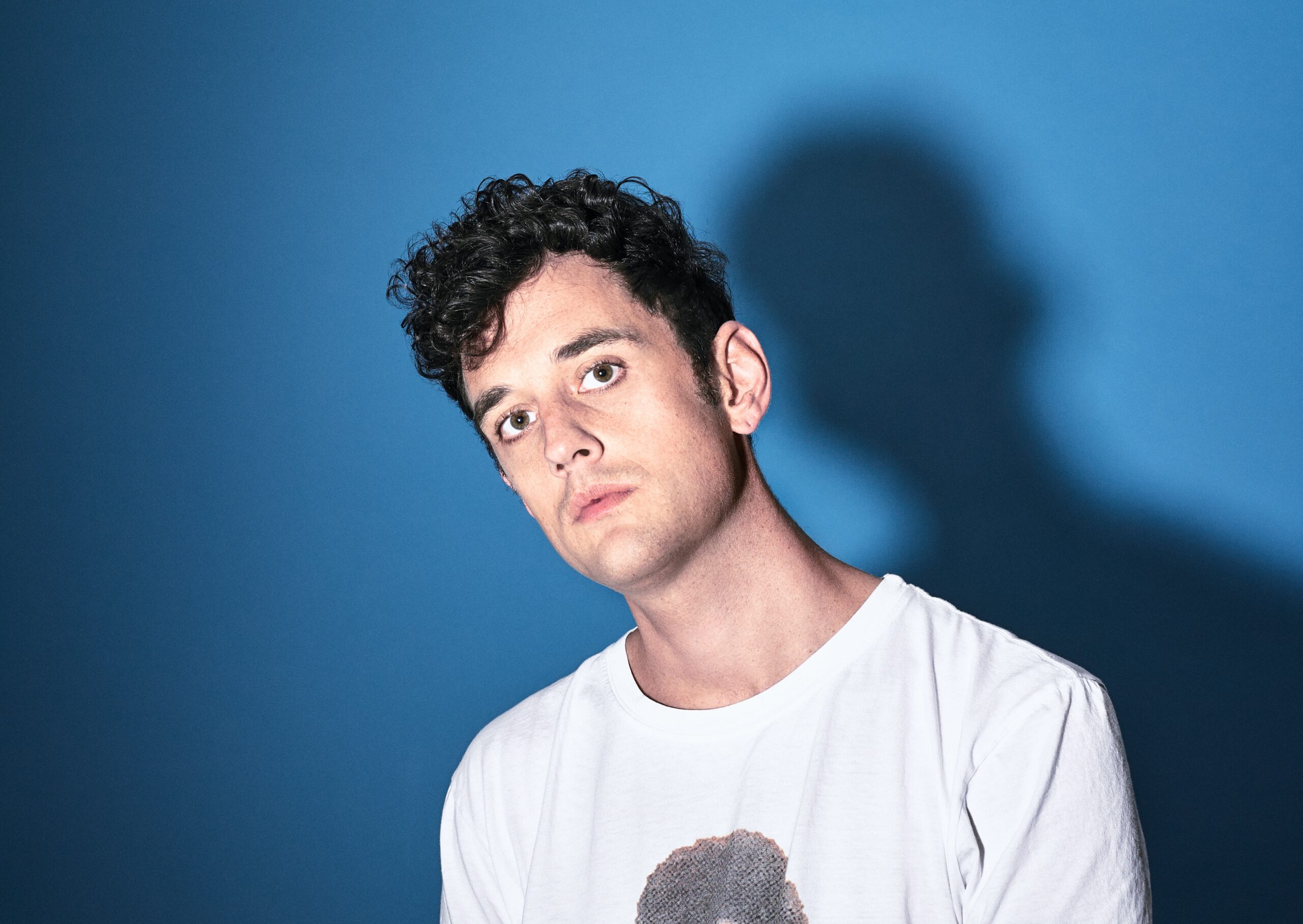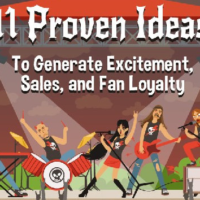Becoming a Better Singer
Linda Septien is one of the top vocal coaches in the U.S. and also President and CEO of the Septien Entertainment Group, a company based in Dallas, TX that offers vocal and instrumental training rooted in classical technique as well as songwriting, artist development and recording studio services for artists performing commercial styles of music including R&B, pop, gospel, rock, alternative, country, musical theater and jazz. A classically-trained singer, Linda was working as an opera singer in Italy before she came to Nashville to record an album and dedicated herself to learning the art of entertainment and performance. Since starting Septien Entertainment Group 25 years ago, Linda has trained superstar artists and performers Demi Lovato, Selena Gomez, The Dallas Cowboy Cheerleaders, Beyoncé, Ryan Cabrera, Hunter Parrish, Glee, including Kevin McHale (Glee), Jessica and Ashlee Simpson and four top-25 American Idol finalists. Additionally, Linda has been affiliated with the NFL Superbowl, The New Orleans Symphony, IBM, Apple, President George Bush, VH1 as well as labels such as Jive, RCA, Arista, Sony and entertainment companies including Disney, Dreamworks and Nickelodeon.

I talked to Linda about the foundation of Septien Entertainment Group and the fundamentals of good live performance and vocal techniques. She also shared some critical tips about becoming a better singer for artists that do not yet have the budget to hire a professional vocal coach.
MC:
Thanks so much for taking some time to talk, Linda. How did you first get into the music industry?
LS:
I was an opera singer in Italy for years. And at that time, I thought I was a diva, hot stuff and totally amazing. I was basically cocky as hell, and I just knew I was going to go onto big, huge things.
In 1984, I came back to Nashville to record an album that was more commercial in nature. I started singing in the studio, and when I stopped, the producer had this stunned look on his face. And of course, I thought it was because he thought I had the most amazing voice he had ever heard. But he told me I sucked. And I said, “You have to be kidding. I just came off a Michelangelo Tour in Italy, which I was paid to do. I know I’m doing something right.”
And he said, “You have no idea how to perform. Your voice is on pitch and obviously trained, but you don’t know what a song is, or how to sing it. You don’t understand how to just ‘be’ and relate to an audience. It was boring.” He completely tore me apart.
I spent about two years before I went back into the studio and wrote copious manuals of notes about what the art of entertainment is – probably about 30 manuals worth. I watched everyone from Mick Jagger, on and tried to figure out what they did when they performed and why it worked. And of course, this was before the Internet and social media, so these performances were harder to find than they are now. I just watched and watched until I finally decided to try out some of the strategies on artists I was working with as students.
It’s funny, because I didn’t actually intend to go into the business, yet I’ve been interviewed about the work I’ve done on everything from Nightline to Success and Millionaire magazines. And they always ask me the same question: “What did you do to get into this?” And frankly, I don’t even know. I didn’t have a plan, a budget or anything. I just started teaching what I had learned to my students, and it worked. It became a business that I never even decided to grow. Now we have 20,000 square feet and 300 artists.
MC:
And you’ve coached a lot of successes. Both Jessica and Ashlee Simpson worked with you, and of course, there have been many others.
I know being a great musician is a very different thing from being a great performer. What are the most common performance-related problems you see among artists, and how do you teach someone to perform?
LS:
Some kids that come to us at a young age are very natural about everything; all they want to do is sing and perform. But they don’t always have the voice to go along with that, so it’s not necessarily a complete package. There is usually something that needs to be taught.
However, stage presence can be taught, and talent can be created. We were featured in a book called The Talent Code, which was written by Daniel Coyle and three Nobel Peace Prize-winning scientists about the brain and about how talent is created after 10,000 hours of doing something the proper way. The idea is that “practice makes permanent,” so if you do something the right way for 10,000 hours, you will become an expert at it.
The biggest issue I see is that people do not realize how much better other people are than they are themselves. People come in thinking they have this unbeatable talent, and all I have to do is bring in three other people that are better, and they are shocked. They really don’t understand they aren’t that talented. I say that with sincere bluntness. Often you might think that when you see this same phenomenon happening on American Idol or other shows, these types of people are fake. But they really believe in their talent. This causes us to have to do a lot of evaluations, because I won’t take on a student until I know there is something we can work with. Otherwise, it doesn’t make a lot of sense.
MC:
If there is talent there, what are some of the things people can work on to improve their performances and their stage presence? Is there something a lot of people don’t seem to understand about performing?
LS:
There is a big concept a lot of people don’t get. A lot of times, you’ll have someone that can sing very well, and they will try to sing a ballad – which is the easiest song to perform if you have a good voice, because often you can get away with not moving and thus not looking goofy. But when you introduce elements of stage presence, a lot of people are unable to do timed gestures and body beats – little inflections of the body that go into and in between beats and are the true signs of a seasoned artist that has been touring for a while. We try to teach artists how to put those seasoned moves into their early performances so they look as if they are seasoned.
Most artists can’t grasp why learning those gestures is important. They think if they just sing and sing well, an audience will be wowed. But audiences weren’t wowed by great singing alone even 10 or 15 years ago. And the situation is worse now, because people are so overstimulated that as a performer, so you have to be entertaining at least by the second or third song. You might be able to get away with just singing the first song, but if the audience is not entertained by the second or third song, they will walk away.
The gestures I teach depend on the artist, their story and who they are. For example, I’m going to do something different for a child pop singer from what I would do for a 22-year old pop singer. We formulate everything down to what they’re going to say in between songs to entice fans to listen to them. I’m looking for someone with a story, someone who is not afraid, and, honestly, I’m looking for someone who will argue with me. Because, if they argue with something I say and I hear, “No, this is how I feel,” I know they are an artist and have something in them. I have many artists that come in and never say a word; they just go along with whatever I say. That’s not the sign of an artist, and that’s not someone that understands what is inside of them and what they need to project.
MC:
So, you teach people timed gestures and have them take cues from other successful performers. What types of artists do you primarily work with?
LS:
We work with about 70 percent pop artists and a lot of rock artists. But we also work with some indie singer/songwriters and country artists. And we train people in piano and songwriting; they can’t just come to us and take voice.
MC:
What can musicians do to improve their stage presence if they don’t yet have the budget to work with a vocal coach?
LS:
There is a lot they can do. I tell people all the time that even after just one lesson, they should have 60 days-worth of ways to improve their performance. Certainly, I’m not the only one who can train them; they can do it on their own, if they understand the tools. It’s just a shorter process of connecting the dots if they come to us, because we have so much experience with this type of training.
There are so many talented artists that understand stage movement. And you might worry about just copying from these people, but you have to remember that great performers – like Whitney Houston and others – also copied techniques from the people that came before them. The only thing really new about each artist is a fresh personal story.
If you want to talk about stage presence in really simplistic terms, just being able to move on the beat while also singing is very difficult for some artists. So, the first thing you need to learn to do is move on a stage back and forth and keep a beat. That is one of the hardest concepts to learn, especially for young children.
Secondly, learning to sing into a microphone properly is important. Most people start out singing into the side of the bulb instead of into the top of it. And the diaphragm of a mic is on the top. Just learning to keep your mouth on the top of the mic takes forever to get someone to understand, because people are always moving it away from their mouths so you only hear about half the words. It often will take us about six weeks just to teach mic techniques. Another detail about the mic is that when you’re not singing, you don’t hold it up to your mouth. You put it down and then within the meter of the song, you have to have it back up to your mouth so you can keep the energy level of the performance up.
Everything on stage is about energy. If you drop anything, the energy disappears. From the time you get on the stage, to the time you get off, you have to be 100 percent “on” and not letting your energy levels drop for a second. You have to entertain. So, when you practice at home – even if it’s on a little cart box – once you stand on that stage, you have to realize you are no longer on the same level as your listeners. You are an entertainer, there to entertain and direct the audience.
Also, just singing constantly in front of anybody that will watch you is important. You have to get used to people staring at you. That is the most overlooked concept and one that many people don’t even teach. You have to get used to eyes watching you, looking at your legs, feet, what shoes and clothes you have on and making assumptions. And you can definitely see people making assumptions when you’re on stage, deciding whether or not they like you. You have to get over that if you want to succeed.
MC:
How do you counsel people to get over that? Because if that sort of scrutinizing happened during a normal social interaction, that would be very disarming and disturbing to deal with. Would you tell them to make eye contact, to not make eye contact … ?
LS:
It depends on the song and the size of the audience. There’s no rule of thumb, because you have to know your audience. Is it made up of relatives, family, friends … or people you’ve never seen before? Are you 20 feet from the audience or 20 yards? Are you auditioning for a label?
MC:
Let’s say we’re talking about an artist who is just starting out and would be primarily playing small clubs – someone who is just going from an open mic setting to playing for a crowd of, maximum, 50-60 friends, family and fans.
LS:
If we’re talking about the staring-back-at-you issue, and it’s a club, it depends on whether the audience is sitting down or standing up, drinking or not. All of these things are factors. If you’re incredibly nervous while you’re performing, you’re probably going to look over their eye line. The problem with that is that once you look over them, you’re going to lose contact.
On a basic level, when you’re trying to figure out how to get over stage fright and get into stage presence, you have to remember that stage fright and stage presence are ideas that are very close together – opposite sides of the same coin. But if you’re just trying to get over stage fright, a lot of it is just about practice and performing so much that you get comfortable. I strongly advise artists to look into the eyes of the people that are watching them so they can get over their fear, not necessarily because the song demands it. Once you get past that, how you interact with the audience depends on whether or not the song is an internal song or an external song.
And how you interact with the audience also depends on what your goals are as an artist. There are so many levels that make up an artist, and it takes a lot of time for an artist to figure out who they want to be – often five, to seven years. As an artist, while you are learning, you have to think about what your goal is in each particular moment. If your goal is to get over people staring you, you have to stare back at people until it stops bothering you. For example, something we teach in one of our top classes – and anyone can do this on their own – is have all the artists in the class go to a different restaurant every week and get up and sing. We okay it with the restaurants beforehand so they don’t get kicked out, even though the artists don’t know that. They go to tables and sing for people. They have to sing for a certain number of people each week, even if they feel awkward. And I don’t care if the artists tell the people they are singing for what they are doing. It actually usually makes the audience feel a little sorry for them. We also have them do this in shopping malls.
One of the other requirements for the artists we work with is that they have to sing for anyone that asks them to sing. They can’t turn anyone down. We actually test them and have designated people to go up to artists and ask them to sing to see if they will do it. And really, any artist can do that. You don’t need a coach to force you. Just go and start singing in the middle of a mall and get over that stage fright.
MC:
And you are teaching a lot of vocals as well.
LS:
Yes. Everything is vocally based. Certainly, the instrument is the foundation. And it is actually pretty easy to teach if you know physics and the voice. There are a lot of coaches who are not singers, but they are just style coaches. And we do both types of coaching, but we have degreed teachers of voice. And most degreed voice teachers know the three different muscle structures that are moving at any one time when someone is singing and other elements of physics.
MC:
Are there some common mistakes a lot of vocalists make that you find yourself having to correct more often than others?
LS:
Female vocalists in particular have a common problem. Most of them don’t know how to blend “belt” with “mixed voice.” They will end their belt at about an A or B-flat and then go into mixed voice or falsetto. Our goal is to increase their falsetto. There’s another set of muscles that actually “belt” the vocal chords, and when those are not used, a singer goes into a lighter voice – the upper register. And that doesn’t work in commercial music. You have to have one range.
There’s a metaphor I use for the voice: You have a Christmas tree and you have ornaments. The Christmas tree is the voice that is planted, watered and it grows. And then you have ornaments you put on to make the tree – or your voice – your own. You might want purple ornaments, or red ornaments. And that’s a great metaphor because it helps you talk about how a lot of people put the ornaments in their voice. In other words, they put it in the Christmas tree and grow it with them attached. That doesn’t work, because you have to have a beautiful instrument and a strong foundation that you then can almost abuse every night. If you don’t plant that tree first, you’re in trouble.
After you plant the tree, you can add the ornaments as you choose. And there are 22 different kinds of vocal shaping or modalities that we teach. For example, you might want to sound breathier, or you might want to sound jazzier or “croakier.” You might also want to add more scats to your voice. These modalities depend on the artist. The most common situation I am confronted with is trying to take someone from a child’s voice to an adult voice, because they are competing against adults, even if they are 15-years old. These singers have to compete against Christina Aguilera or Adele. When a fan is buying music, that person doesn’t think about the age of the person that made the record; the person says, “I’m going to buy this Adele song over this song by another artist.”
What people hear on the radio or anywhere else all one big melting pot. So, I have to teach artists to compete with their young voices against adult voices that have already been out there for years, or they won’t make it. For example, when Jessica Simpson came to me, she had a huge wobble in her voice. She would sing “Amazing Grace” with a really big vibrato. But then she learned how to shorten it and make it quicker and more ear-pleasing, and it worked for her. However, the problem was, she was a big ballad singer with a great voice, but no one really got to hear how great her voice was, because ballad music wasn’t in style, and she had to sing pop songs that didn’t necessarily suit her.
Demi Lovato got hoarse a lot, because she was often pushing her voice. To better explain, there are two ways of making sound with your voice: one is through friction, like when run your finger along the rim of a clear martini glass; the other is through air passing across two lips, like when you blow up a balloon and squeeze the lips of the balloon to make sound, which is what singing is. We have to train someone to rethink how they produce sound. You don’t make sound through friction, you make it through actual diaphragm breathing, as if you are getting the wind knocked out of you. If I really knocked the wind out of you, you would pass out, because too much air passed through you. And that same concept is the foundation of singing. When an artist can learn that concept, that artist has no more vocal problems.
I sing eight hours a day, which is a lot of time spent singing. And as artists, abuse our voices when we’re on tour or singing a lot. Human vocal chords are only made to be used four hours a day. So, if I’m using them for eight hours, I’m already abusing it. However, that’s my instrument, so I have to protect it. When I go to bars with my band, I have to not talk, because otherwise, I won’t be able to sing the next day. And at our studio, we offer artists a whole lesson just on protection of voice and what to do so you can keep singing.
As another example, Hunter Parrish of Weeds wanted a vocal career. His voice has always been beautiful, but he kept taking classes in acting at the same time. I took him to L.A. with me, and he ended up staying and taking a bunch of great Disney stuff and then landed on Weeds, which had an eight-year run. Now he’s trying to launch his music career. But because musicians need to stay a little mysterious to be successful, he’s facing a big challenge: He’s already prominent on video and really out there. So, that’s another issue we have to talk about regularly with artists, along with crossing over into the adult world after being in a boy band and a lot of other things. We often have to advise on taking calculated risks.
MC:
You’ve coached thousands of people at this point. What qualities do those that have been most successful share?
LS:
We’ve worked with about 12,000 artists at this point. And we only launched about two major careers each year out of 300 clients. That means there are 298 that don’t make it.
If you’re talking about the youth side of our client base, I’d say a lot of the success is about auditioning and luck. If Disney needs someone that is a solid singer and an actress, and I have someone who fits that description, they’re going to get the part.
But I think you’re really asking me about what the artists have possessed on the inside that have made them successful – what drives them, keeps them out there and prevents them from failing. The #1 quality the successful artists possess – besides having a product to sell and an amazing gift to share – is the ability to get knocked down and still come back up again. You’ve heard this so many times, but in this industry, these kids are in a boxing arena, constantly being knocked down and from one set of ropes to another. And some of them don’t get back up. Some of them can’t get back up on their own, but do with the help of a strong manager, parent, friend or someone else. The most successful people I’ve worked with have been beaten up so badly – and actually every one of them has had a tremendous problem with success when it came.
If you’re talking about artists that are at the point in their career before they are famous, those that succeed are the ones that have a desire to make music that is stronger than anything else. They practice nonstop. We have some here that would practice singing 20 hours per day if they could, but we can’t let them, because the voice gives out. It’s about discipline and hard work. A lot of musicians are very flaky. And it’s the ones that are not that make it.
To learn more about Linda Septien and the work she does with artists, visit the Septien Entertainment Group website https://www.theseptiengroup.com/









